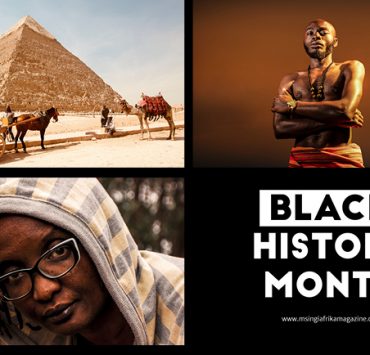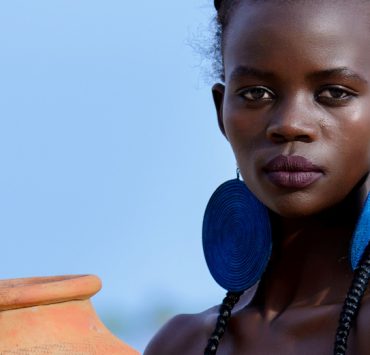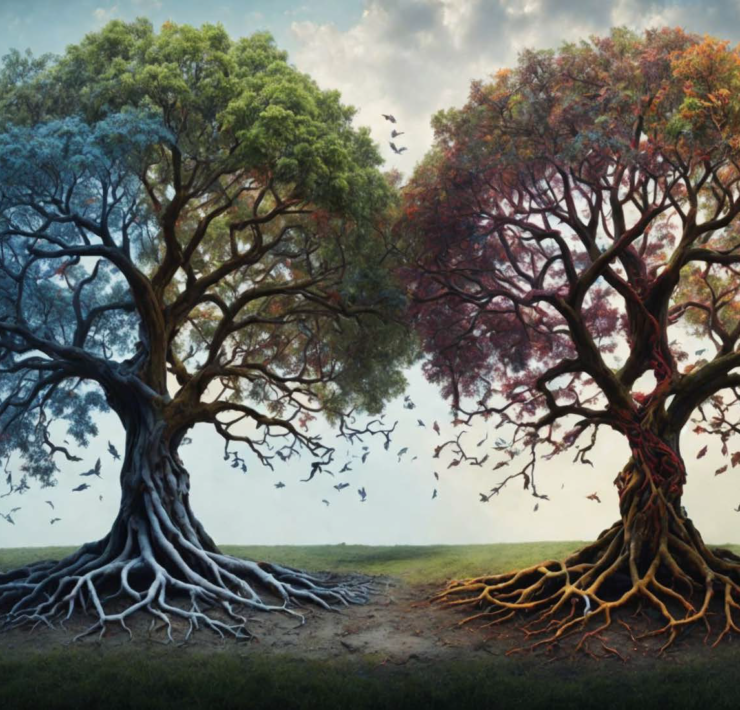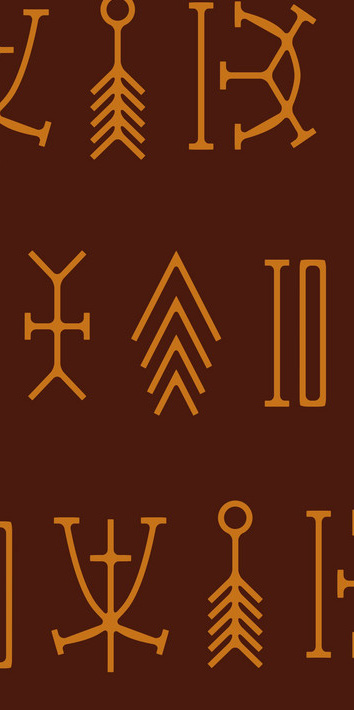Adinkra
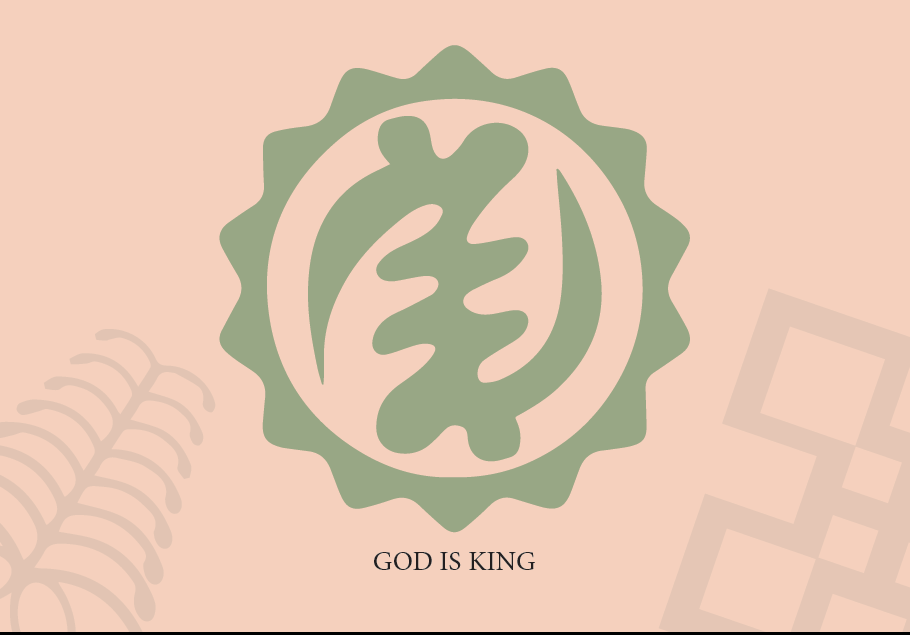
Chioma Phillips is the Editor of Msingi Afrika Magazine and…
THE ANCIENT ROYAL SYMBOLS OF THE ASHANTI OF GHANA
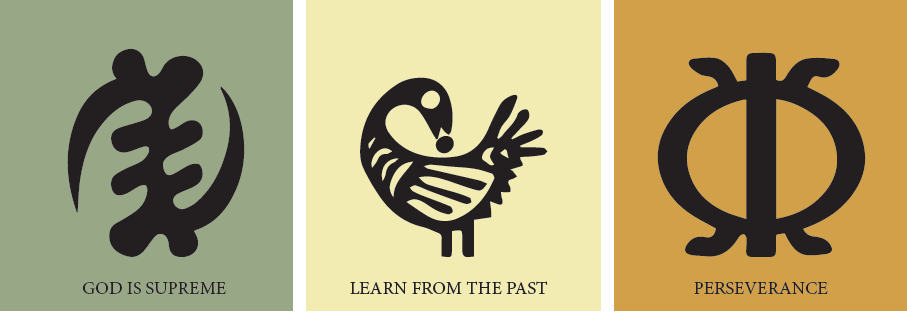
The Akan people of Ghana make up roughly half of the country’s population, having migrated to and settled in there in the period between the 11th to 18th centuries. Speakers of this language are said to include Asante (Ashanti), Akyem, Attié, Fante, Brong, Baule, Chakosi, Guang, Twi and Anyi. Some Akan are also said to live in the Ivory Coast and in Togo.
The name, Asante, means ‘because of war’ which describes the origin of the Asante Kingdom in that it was created in order to fight another kingdom known as Denkyira during the unification of the Asante clans. Asante royalty created two unique fabrics known as Kente and Adinkra, both of these were reserved for royalty. In Akan, ‘di nkra’ means to take ones leave of this world and Adinkra is worn by the living who are paying their respects to the one who has gone to the next world. The Adinkra is used to pass a message to them by means of the elaborate symbols that are woven into the fabric – though the Adinkra is not worn during the deepest periods of mourning (Boateng). The fabrics for the funerals were dyed in red (ochre), black and brown. This fabric was intricately designed and printed using hand-carved stamps and used to be worn exclusively by royalty. These days, however, the symbols and the fabric have found acceptance and use well beyond the Ashanti royalty.
Adinkra Symbols
In another sense, therefore, Adinkra also refers to a system of symbolic writing that is not restricted to communication with those making the passage from one world to another, but also to codify the “Akan world view and their quest for truth and righteousness in the world.” (Willis)
The Adinkra symbols, mirror the intricate Zulu beadwork and the Egyptian Medu-Ntjer picture writings (know as hieroglyphs to archeologists) as they are used to convey messages, tell stories, supply powerful unspoken imagery to non-verbal communication. They are a powerful demonstration of the rich historical culture of Afrika that is often belittled by the west. These symbols have often been dismissed as being occultic, but when you search them out you realize that these were a people who had invented a system of communication to capture the world around them and that their dismissal as occultic and evil was just one more way to ensure that the Afrikan felt, thought and believed less of himself than he ought – and therefore more easily embraced a culture designed to control and subjugate him. This is a major tragedy and a crime committed against the Afrikans by the colonialists and those missionaries or church officials who were working under their influence to erode the confidence of our people.
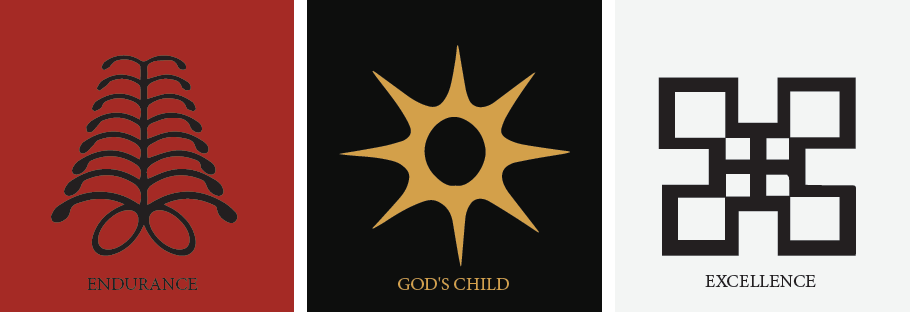
There are about 400 Adinkra symbols. According to Willis, these symbols have been in use for about two hundred years and there are 70 or 80 ‘core symbols’ that convey the philosophy, beliefs, social values, history and wisdom of the Akan and the Gyaaman of Ivory Coast. Some of those symbols and their associated meanings are captured at the beginning of this article. Others can be found online for the enthusiast who is seeking to know more about this.
The symbols are used either alone or paired with other symbols in order to convey a specific meaning. For instance, for the 2019 Year of the Return, Ghana created a special logo that made use of two Adinkra symbols: Nsoromma which is a star that symbolizes the children of the heavens and Fawohodie which symbolizes emancipation, freedom and independence. They integrated these two symbols with an illustration of the waves of the Afrikan seas in the colors of Afrika: Red (their toils), gold (their wealth) and green (the fertility of the people). The waves faced backward, representing the return.
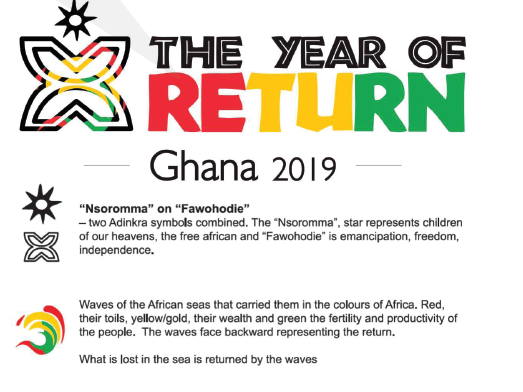
Afrika’s depth of spirituality and profundity of cultural expression has been badly eroded and relegated to the realm of the museum. It was so far ahead of and beyond what the west would like us to believe. As the womb of mankind we carry a life that exceeds this foolishness that man has chosen to preoccupy himself with. These empty and vain pursuits are gradually draining us of the essence of God in us and what His essence is being traded for, I can assure you has no eternal place or value to speak of. None.
It is time to reevaluate, Afrika.
What's Your Reaction?
Chioma Phillips is the Editor of Msingi Afrika Magazine and the host of Msingi Afrika Television. Her hope is to see the Truth shared, with all who will listen, for the transformation of the people and the continent of Afrika - and the world. She believes passionately in the critical role that Afrika and Afrikans have to play on earth right now and hopes to ignite the spark that will cause them to see and believe who they are, so that they can live out their Truest lives for the remainder of their days.









